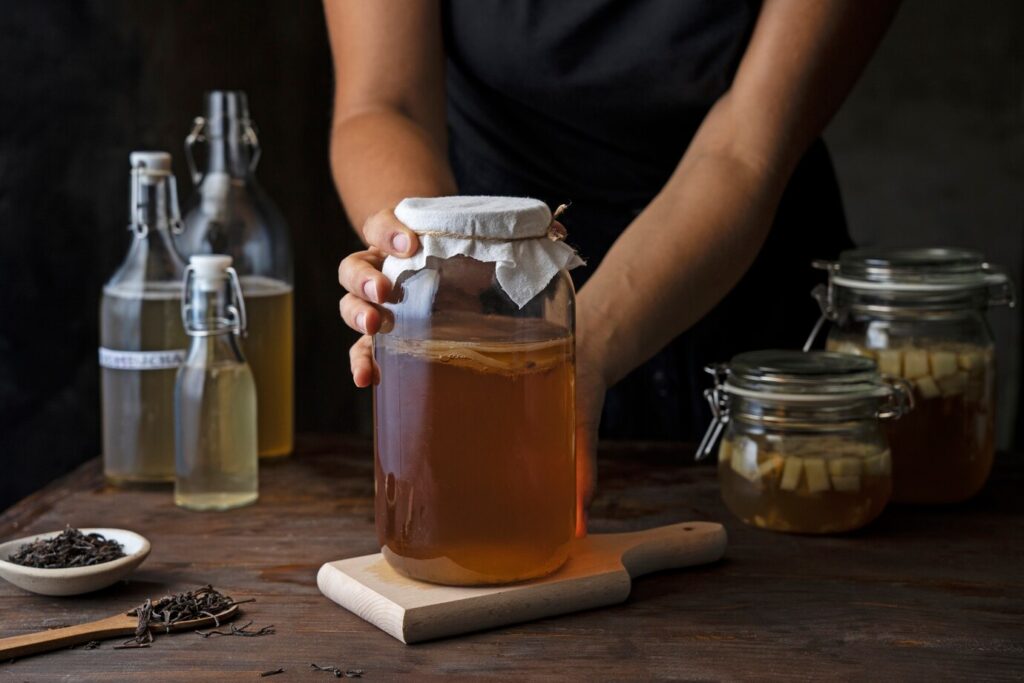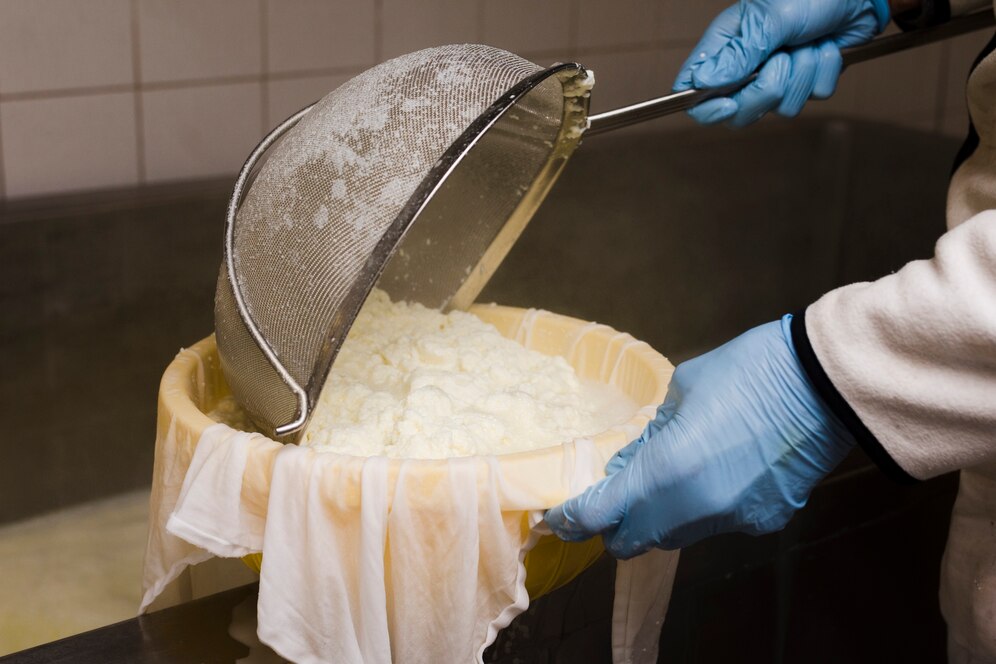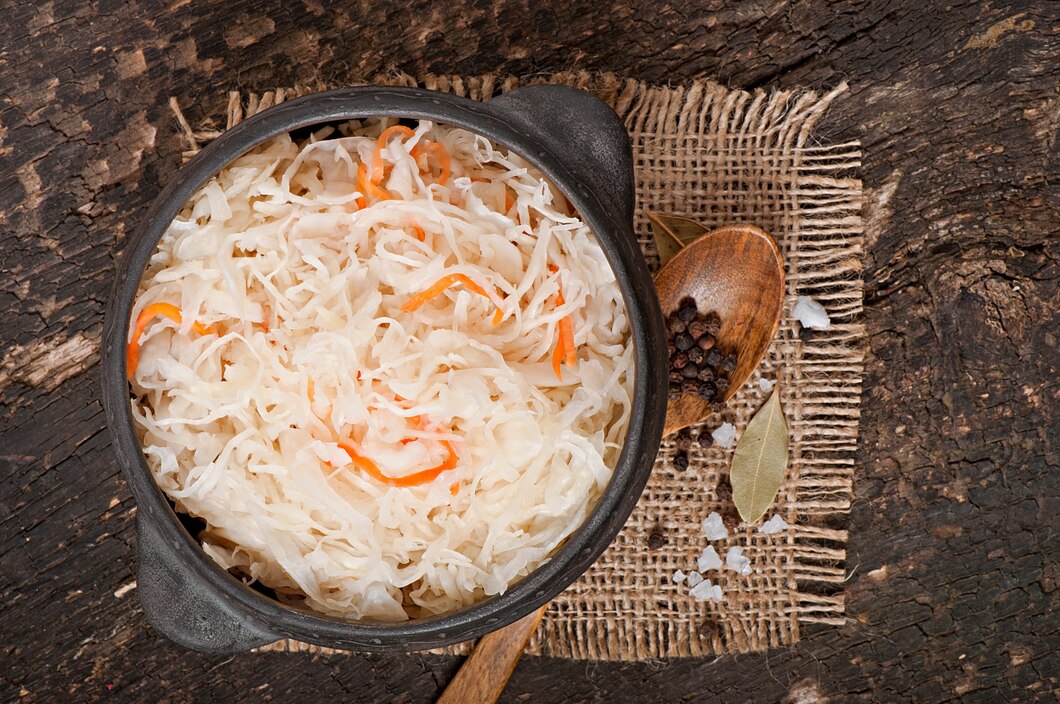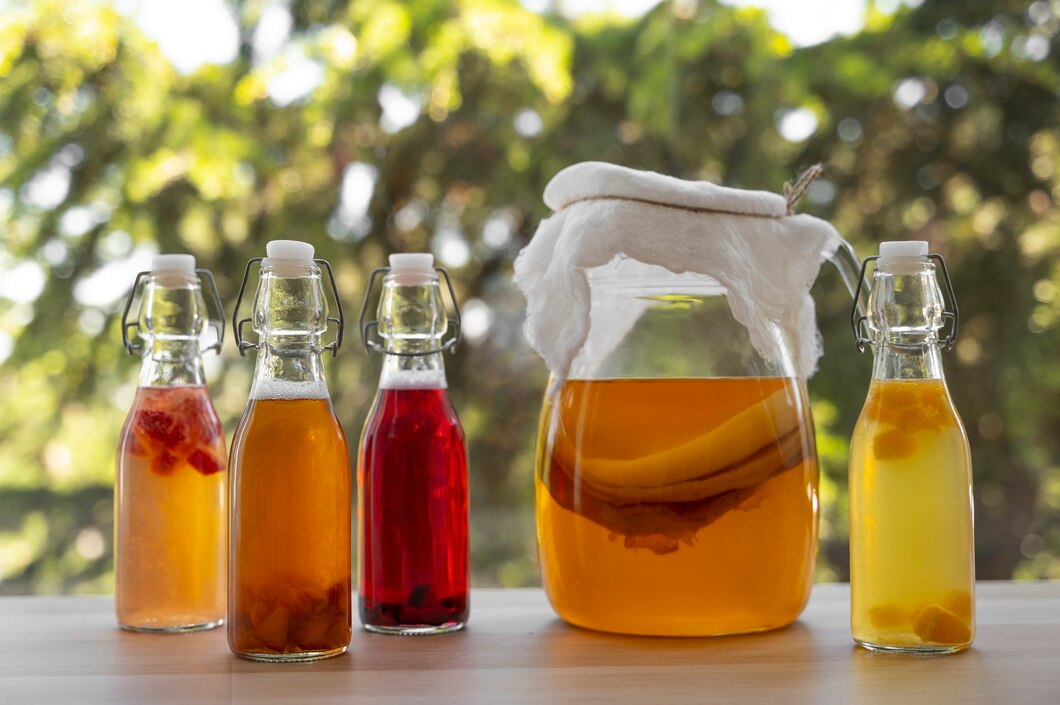The Food Blog

Ancient Fermentation Techniques Still Used Today
Fermentation is one of the oldest ways to preserve food, dating back thousands of years. Before refrigeration, ancient cultures fermented grains, vegetables, dairy, and meats. This made food last longer and improved nutrition. Many of these old techniques are still used today. They are valued not just for preservation but also for their unique flavours and probiotic health benefits.
Fermented foods are key in modern global cuisine, from sourdough bread in Ancient Egypt to Korean kimchi and Japanese miso. This guide will explore ancient fermentation techniques that have endured. You’ll also learn how to use them in your kitchen today.

The Science Behind Fermentation
At its core, fermentation is a natural metabolic process in which microorganisms (bacteria, yeast, or fungi) convert sugars into acids, gases, or alcohol. This process:
- Preserve food by creating an acidic or alcoholic environment that inhibits spoilage.
- Enhances flavour through the development of tangy, earthy, and umami-rich profiles.
- Improves nutrition by producing probiotics and increasing the bioavailability of certain nutrients.
Types of Fermentation:
- Lactic Acid Fermentation: Used in vegetables, dairy, and grains, resulting in tangy, probiotic-rich foods.
- Alcoholic Fermentation: Yeast converts sugars into alcohol and carbon dioxide, which is used in bread, beer, and wine.
- Acetic Acid Fermentation: Alcohol is converted into vinegar and used for preservation.
Fermentation in Ancient Civilisations
Ancient Egypt: Sourdough Bread
The Egyptians were among the first to discover the process of leavening bread through fermentation, dating back to around 1500 BCE. They created sourdough bread by mixing flour and water, allowing wild yeast and lactobacilli to ferment the dough.
Traditional Technique:
- A mixture of flour and water was left uncovered to attract wild yeast.
- Over time, the dough fermented, developing a slightly sour flavour.
- The fermented dough was baked into fluffy, tangy loaves.
How to Try It at Home:
- Mix flour and water and leave it at room temperature for 5–7 days.
- Use the fermented starter to leaven bread dough, creating your homemade sourdough.
China: Fermented Soybeans (Doubanjiang and Tempeh)
As early as 200 BCE, the Chinese fermented soybeans into condiments and protein sources. Doubanjiang, a spicy fermented bean paste, and douchi, salted fermented black beans, became essential in Chinese cuisine.
Traditional Technique:
- Soybeans were boiled and mashed.
- They were mixed with salt and fermented in clay jars for several months.
- The result was a rich, umami-flavoured paste used in stir-fries and soups.
How to Try It at Home:
- Use fermented black beans or fermented chilli bean paste in stir-fries for an authentic flavour.
- Try making tempeh by fermenting cooked soybeans with a starter culture for 48 hours.
Korea: Kimchi
Kimchi is a fermented vegetable dish with roots tracing back over 1,500 years. Made from cabbage, radish, and a spice mixture, kimchi is fermented with lactic acid bacteria, creating its signature tangy flavour and probiotic benefits.
Traditional Technique:
- Napa cabbage is salted and left to sit for several hours to release water.
- The cabbage is coated with a paste made of chilli flakes, garlic, ginger, and fish sauce.
- It is packed tightly into jars and left to ferment at cool temperatures for several days to weeks.
How to Try It at Home:
- Use cabbage, carrots, and radishes with a spicy brine.
- Let the mixture ferment at room temperature for 3–5 days, then refrigerate.
Fermentation in Europe: Preserving Dairy and Vegetables
Ancient Rome: Garum (Fermented Fish Sauce)
In Ancient Rome, garum was a prized condiment made from fermented fish guts. Similar to modern fish sauce, it was used to add salty, umami depth to dishes.
Traditional Technique:
- Fish scraps were layered with salt in large clay vats.
- The mixture was left to ferment in the sun for several months.
- The liquid was drained and used as a savoury sauce.
How to Try It at Home:
- While making garum at home is complex, you can use modern fish sauce in recipes to achieve a similar umami flavour.
Germany: Sauerkraut

Sauerkraut, originating from Central Europe, has been made for over 2,000 years using lacto-fermentation. It is valued for its tangy flavour and gut-healthy probiotics.
Traditional Technique:
- Cabbage is shredded and salted.
- The mixture is packed into jars and pressed down to release liquid.
- It is left to ferment at room temperature for 2–4 weeks.
How to Try It at Home:
- Shred cabbage and salt it.
- Pack it tightly into a jar and let it ferment for several weeks.
Fermentation in the Americas: Corn and Alcohol Preservation
Mexico: Tepache
Tepache is a fermented pineapple drink with roots in pre-Hispanic Mexican culture. It is made by fermenting pineapple peels with sugar and spices, creating a tangy, slightly alcoholic beverage.
Traditional Technique:
- Pineapple rinds are mixed with piloncillo (unrefined sugar) and spices.
- The mixture is left to ferment at room temperature for 2–5 days.
- It is strained and served chilled.
How to Try It at Home:
- Ferment pineapple peels, sugar, and cinnamon for a tangy, lightly effervescent drink.
South America: Chicha
Chicha is a fermented corn beverage consumed by Indigenous peoples for centuries. The fermentation process breaks down starches into sugars, producing a slightly alcoholic drink.
Traditional Technique:
- Corn kernels are chewed and spat into a bowl to introduce natural enzymes.
- The mixture is left to ferment for several days.
- The resulting liquid is strained and enjoyed as a mildly alcoholic drink.
How to Try It at Home:
- Skip the chewing and use cornmeal, water, and sugar.
- Let the mixture ferment for 2–3 days.
Health Benefits of Ancient Fermentation
Ancient fermentation techniques were not only about preserving food but also enhancing its health benefits. Today, fermented foods are valued for their:
- Probiotics: Promote gut health and improve digestion.
- Nutrient bioavailability: Fermentation increases the absorption of certain nutrients, such as vitamin B and iron.
- Complex flavours: The process enhances the umami, tangy, and earthy notes in food.
Conclusion: The Timeless Art of Fermentation

Ancient fermentation techniques are culinary treasures that defy time’s grasp. These creations thrive in our kitchens today, from the sun-kissed Egyptian sourdough to the tangy zest of Korean kimchi. Mexican tepache brings a sweet, spiced twist, showcasing the vibrant legacy of fermentation. Rich flavours and health benefits flourish in each delightful bite!
Incorporating traditional fermentation techniques into you to preserve food naturally,enhance its flavour, and enjoy probiotic benefits—just as ancient cultures did. Experiment with different vegetables, grains, and beverages to create your fermented masterpieces.









